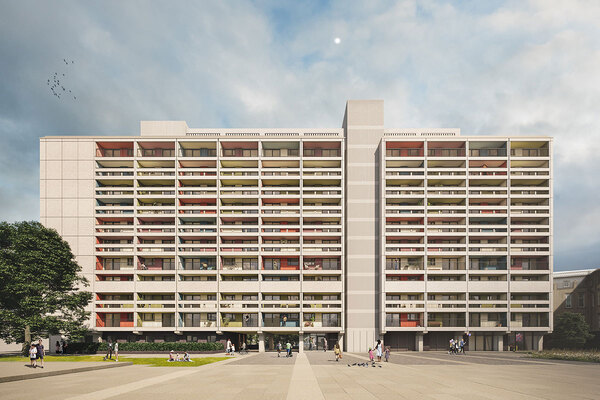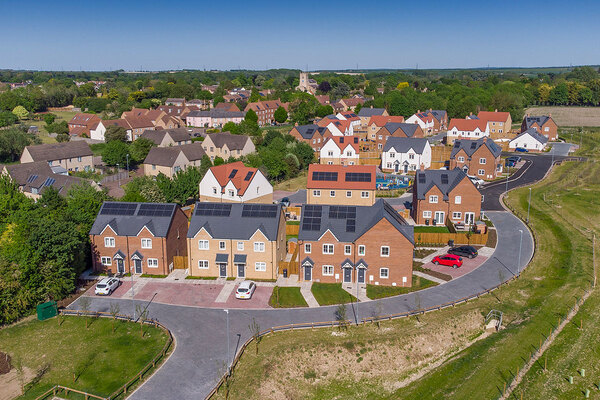Leverage points: places to intervene in retrofit delivery
Ida Ahmad, chief executive officer at Maesin, says billions are being channeled into upgrading Britain’s housing stock through schemes like the Warm Homes: Social Housing Fund (WH:SHF), the Energy Company Obligation (ECO), and the Great British Insulation Scheme (GBIS). Yet residents still report homes that remain cold, costly to heat, or prone to damp and mould.
Systems thinker Donella Meadows described this as the trap of focusing on weak leverage points. In retrofit, most effort has gone into creating more funding streams with slight variations in eligibility criteria, technical standards and funding amounts. Those moves may be necessary, but they don’t shift the system.
If retrofit is to succeed, we need higher-leverage interventions: strengthening existing feedback loops, reducing the delays that blunt them, creating new ones through better information flows, and adopting a mindset of continuous improvement. That’s how investment turns into homes that are warm, healthy, and affordable to run.
Parameters: the lowest leverage points
Parameters are the constants and numbers we like to tinker with — subsidies, taxes, standards. Meadows argued that they rarely transform behaviour.
Retrofit policy has largely stayed at this level. We’ve raised EPC targets, launched successive funding schemes, and developed publicly available specifications (PAS). Yet none of these guarantee better homes. A property can move from EPC E to C and still be draughty and damp.
Parameters feel like progress because they’re visible and easy to announce, but they have little power to move the status quo. We need more leverage to change outcomes at the pace and scale that retrofit requires of us.
Feedback loops and delays: where real change begins
Retrofit relies on negative (self-correcting) feedback loops, such as inspections, audits, and resident complaints, to catch problems. But these loops are weakened by delays built into the monitoring system itself.
Current policy, designed to balance oversight with delivery capacity, leaves large blind spots: low-volume installers are rarely checked, work can be fragmented to avoid scrutiny, and bad actors can go undetected for years. By the time issues surface, residents have endured poor outcomes and the chance to learn has passed.
This is why failures under ECO4 and GBIS were so costly. Monitoring existed, but feedback arrived too late.
If feedback came faster and more consistently across the sector, the system would be able to learn. And while negative loops prevent errors from persisting, positive (self-reinforcing) loops can accelerate success: contractors who learn and improve win more work, residents who see benefits spread trust, councils who observe results back bold programmes. Both types of loops are essential, but only if they operate quickly and strongly enough to shape behaviour.
Information flows: creating new feedback loops
Today, information flows are patchy. Councils receive reports months late, contractors rarely see measured outcomes, and residents are often left in the dark. This slows learning and prevents the formation of new feedback loops.
Imagine if performance data were immediate, transparent, and widely shared. Negative loops would be activated earlier to correct errors, while positive loops would accelerate as residents, contractors, and councils gained confidence from visible success. Word of what works would spread quickly, not just the horror stories.
Better information flows unlock new cycles of correction and growth that don’t exist today. They foster learning loops that amplify what’s working and diminish what’s not.
Mindset: the paradigm out of which the system arises
Mindsets are the deepest leverage points. They shape how we interpret everything else.
Too often, monitoring and evaluation are seen as compliance costs to be minimised. But if treated as tools for learning, they become drivers of improvement and trust.
Residents who notice real benefits talk to their neighbours.
Contractors who see performance data innovate with less risk.
What retrofit needs most is a mindset shift: away from compliance and risk-avoidance, toward openness and continuous learning. With that shift, every project helps the next one go better.
Closing thoughts: choosing higher leverage points
Britain has no shortage of retrofit ambition. But systems don’t change because we tweak parameters. They change when we shorten delays, strengthen feedback, share information, and reframe the whole effort as learning.
If monitoring remains a box-ticking exercise, we’ll keep producing numbers without delivering outcomes. But with stronger learning loops, and the courage to act on them, retrofit can become a system that learns as it grows.
That will make retrofit more trustworthy for residents, more rewarding for contractors, and more effective for councils and funders. Every installation can be a lesson learned. That’s how today’s investment turns into warm and efficient homes, and how we finally build a retrofit system worthy of the scale of the challenge.



